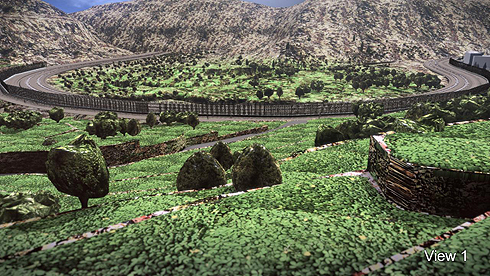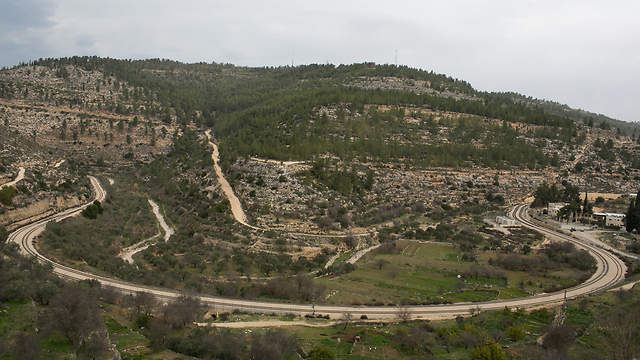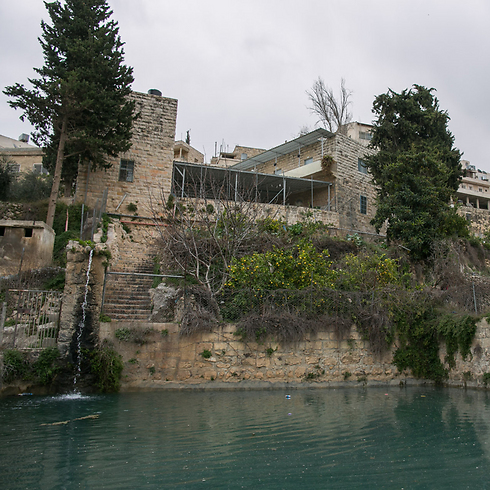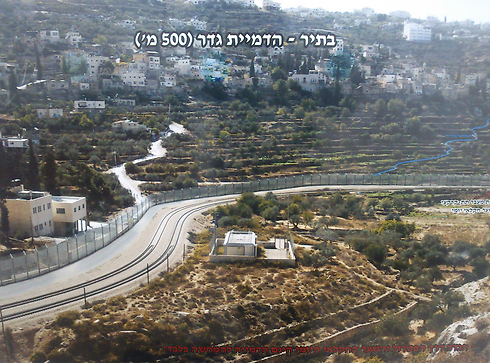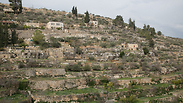
Gov't to vote on border fence in World Heritage site in Battir
Environmental group worries for fate of agricultural terraces that preserves ancient irrigation methods; Gush Etzion head: Fence will block further settlement expansion.
The cabinet will vote on Sunday whether or not to approve the planned route for the separation fence in the West Bank village of Battir, a World Heritage site. In an unusual instance, both settlers and the Palestinians are objecting to the fence's planned route – each for their own reasons.
Attorney-General Yehuda Weinstein's legal opinion empowers the Israeli government to give the final approval for the fence's construction, a decision first made in 2006.
A government decision to approve the construction of the fence in its proposed route would have broad legal, diplomatic and environmental consequences. The move was expected to lead to harsh international criticism against Israel.
The agricultural terraces in Battir (formerly known as Beitar) are nearly 4,000 years old, and are considered a one of a kind heritage site that preserves ancient agricultural methods.
In June, UNESCO inscribed the terraces in Battir on the List of World Heritage in Danger, stating that "the landscape had become vulnerable under the impact of socio-cultural and geo-political transformations that could bring irreversible damage to its authenticity and integrity."
In 2012, the Friends of the Earth Middle East organization petitioned to the Supreme Court of Israel, calling on it to act for the preservation of the terraces because of their importance as a one of a kind environmental and heritage site. The petition also urged a ruling to find an alternative route for the separation fence.
After the Supreme Court held a series of discussions on the issue, led by Supreme Court President Asher Grunis, the court recommended that the government reconsidered the planned route for the fence, due in part to the announcement of the site as a World Heritage site, which obligates the government to further deliberate the considerations for its preservation.
Should the government approve the original separation fence route once more, the issue was expected to return to the Supreme Court. Despite the Supreme Court's recommendation to reconsider the fence's route, the assessments were that in light of the attorney general's updated legal opinion, which takes into account the new diplomatic and environmental consequences, the judges would avoid accepting the petition which unequivocally rejects the fence's route.
Gidon Bromberg, the director of the Friends of the Earth Middle East which filed the petition to the Supreme Court citing environmental reasons, said that "the motives to approve the destruction of the site, if it is indeed approved on Sunday, are strange at best and outrageous at worst. This is a one of a kind site on a global scale, determined as such by a long list of global preservation experts, as well as UNESCO that recognized the site as a World Heritage Site."
He went on to say that his organization has "already proven in court - there are clear existing alternatives to the fence route the government proposes, while at the same time the damage that will be caused to the site should the current route is approved is enormous and irreversible."
"There is no doubt, as far as we're concerned, of the security need for the separation fence, but there is objection to the route that was determined," he continued.
"At the Supreme Court discussions, the Defense Ministry's representatives could not explain why the state is insisting on this particular route, which will not only bring to the destruction of an irreplaceable site, but to severe diplomatic damage to Israel," Bromberg concluded.
Another objector of the proposed fence route is Gush Etzion Regional Council head Davidi Perl, who said on Thursday that "this is a wretched decision that brings us back to the 1967 borders and places the residents of Gush Etzion under Palestinian sovereignty. This goes against the spirit of the settlements, and in actuality throws the Gush's residents outside the fence and outside the territories of the State of Israel."
Perl went on to say that the demarcation of the Green Line with a fence will also prevent settlement expansion to the 4,000 dunam area that Israel decided to annex last month.
On the opposite side, the Defense Ministry said that "the security fence's route near the Battir village in southern Jerusalem is the last breach left in the protection of the residents of Jerusalem. The route was planned according to clear security needs that have been recognized by the Supreme Court - preventing terrorists from freely entering Jerusalem and the Israeli homefront, and defending the train tracks to the capital, that pass near that route."
The Defense Ministry went on to say that "the planned route, which has been changed in the past to minimize damage to the landscape, does not go through the area declared by UNESCO (as a World Heritage site), does not harm the ancient terraces (nor the lower terrace that is adjacent to the planned route), and does not hurt the traditional irrigation method. While planning the route, much consideration was given to how the fence would affect the environment and unique solutions were found to ensure minimal damage.
"In its plan of the route in the Battir area, the defense establishment did everything in its power to minimize any damage, but it cannot accept the petitioners' demands not to build the fence at all, as it is the most basic component of the defensive obstacle (to terrorists), or to construct the fence in a way that would leave the train tracks to Jerusalem outside the security fence."
A senior official in the Defense Ministry added that "the fact the route was changed during the court proceedings shows the defense establishment was willing to meet the petitioners halfway, even at the cost of security compromises, in order to narrow down to a minimum the damage to the environment and to the landscape."
According to the official, the planned fence was lowered from 5 meters to 3 meters; the obstacles on the fence were narrowed to less than 10 meters in width, compared to typical obstacles that are 50-70 meters wide; and the fence was changed from a concrete wall to a metal fence.
"It is important to note, however, that it was not because of the fence's physical attributes that the court sent us back to the government for approval, but because of the diplomatic consequences and UNESCO's involvement in the process," the official added.
Attila Somfalvi contributed to this report.











